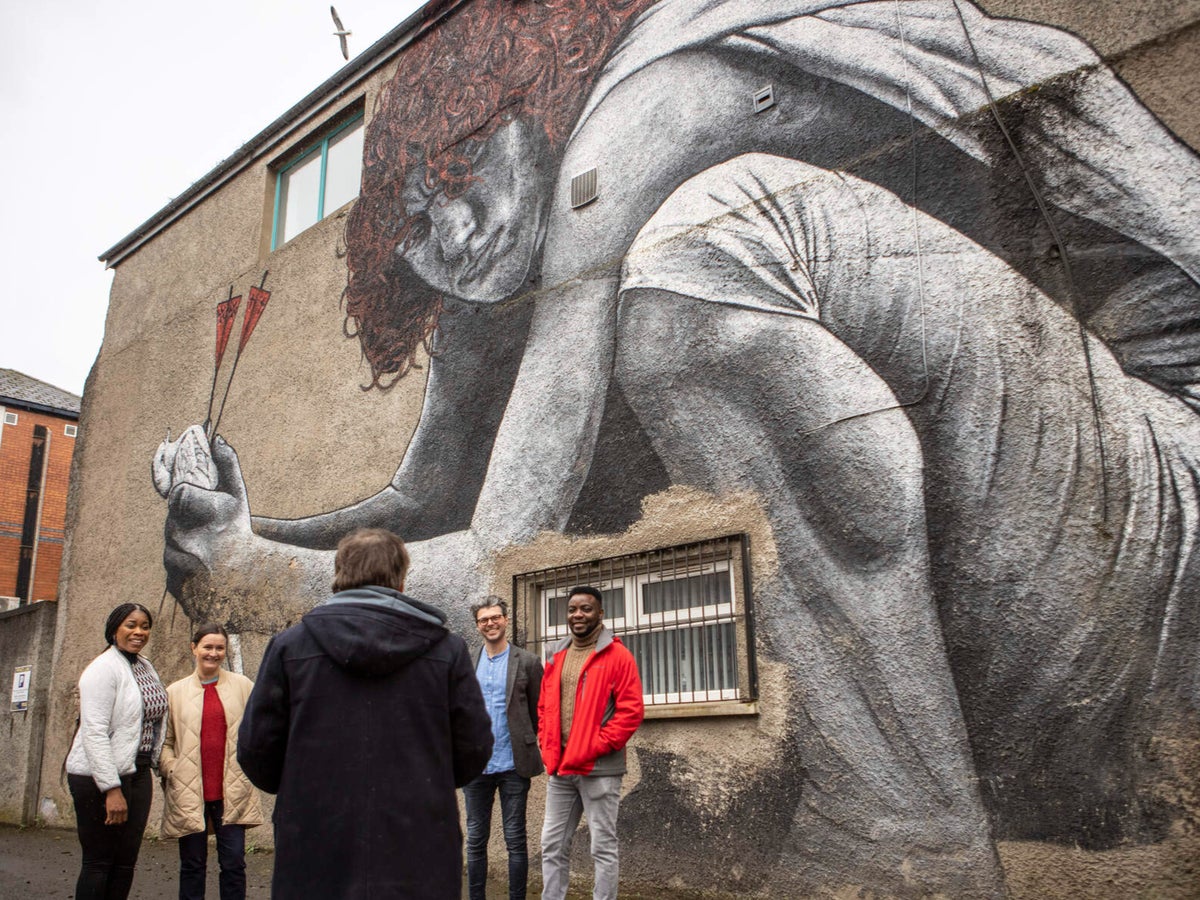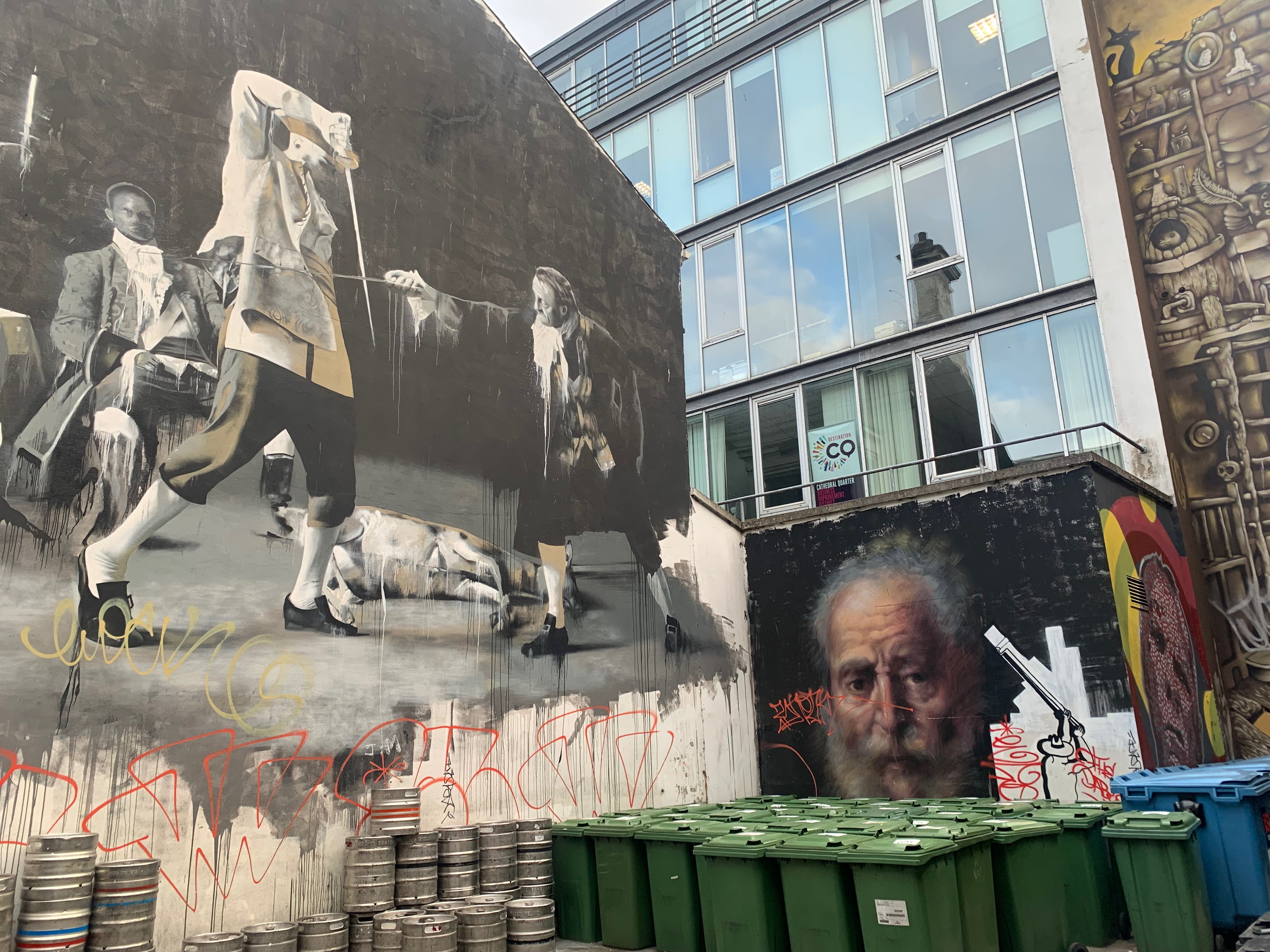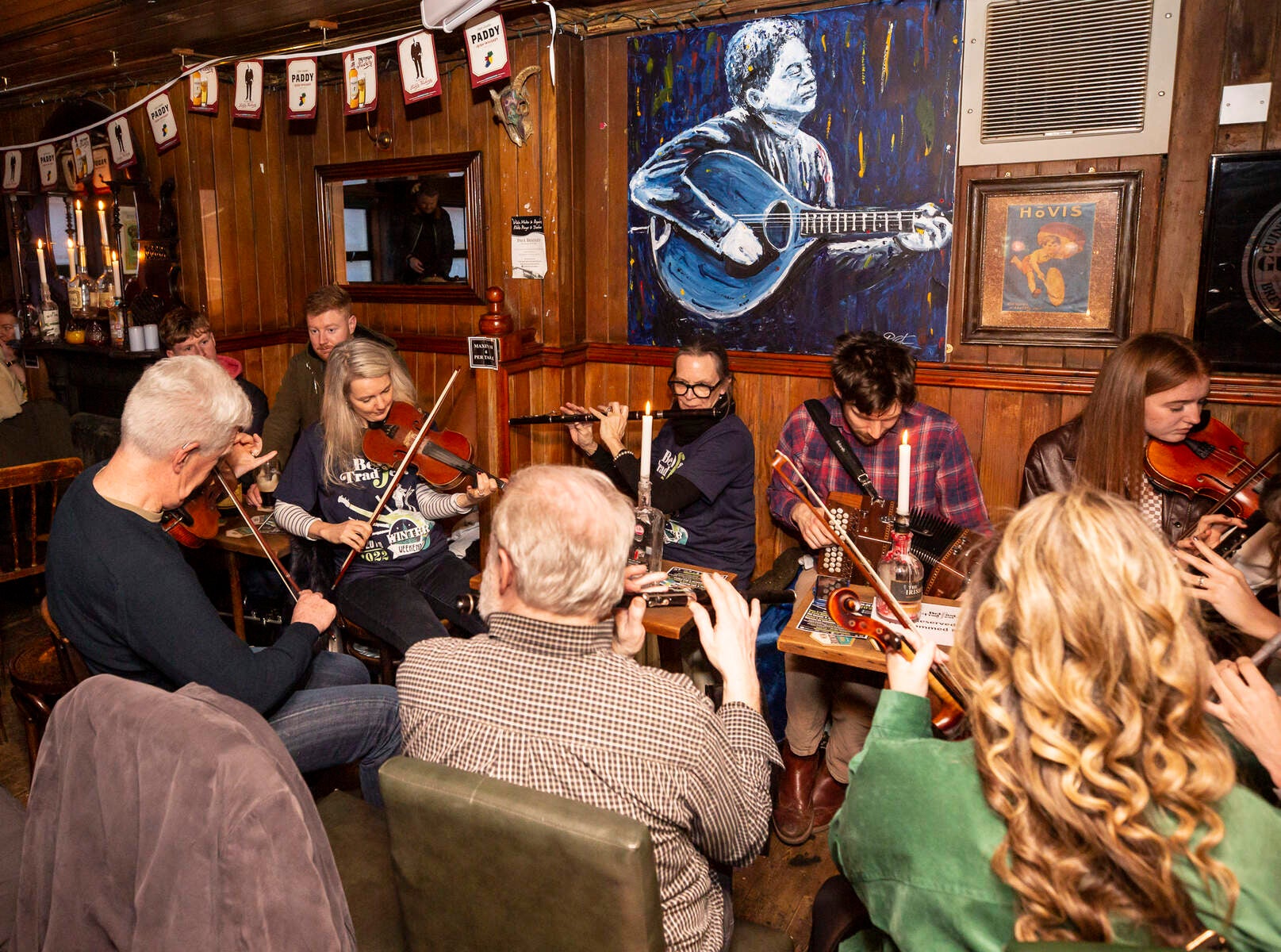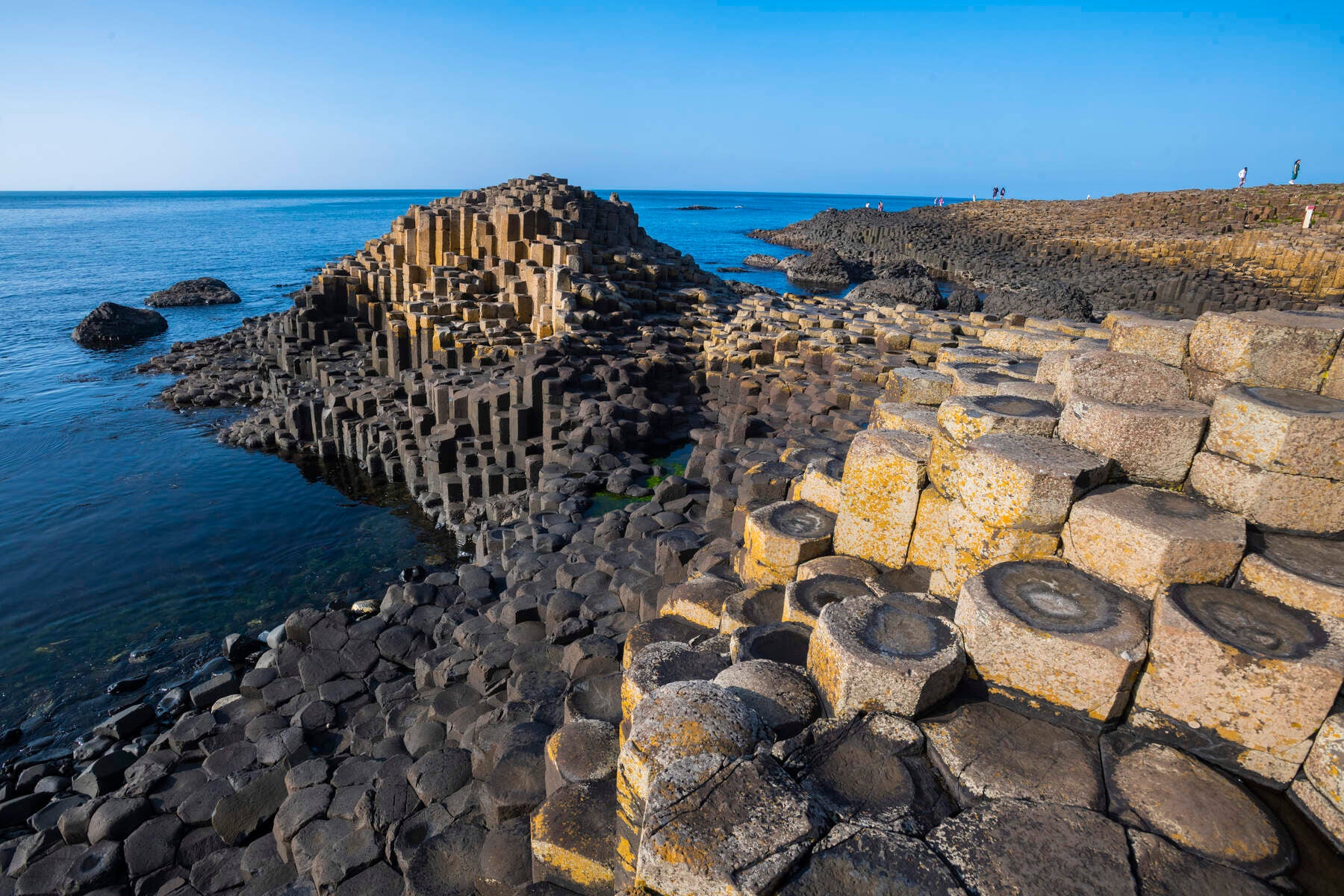
There’s always been art on the streets of Belfast. The political murals on gable walls in nationalist and unionist areas are famous worldwide, and art often provided a way of bringing people together, forging an alternative view of the city that was never just about the stereotype of bombed-out buildings and gun-toting soldiers prior to the 1998 peace agreement.
I think about this over a caramel square in the Linen Hall Library cafe, contemplating the display of political posters stretching up several floors in the stairwell. Founded in 1788 in a former linen warehouse, the Linen Hall is the oldest library in Belfast. Not only does it have a vast collection of books and cosy places to read them, it also runs regular exhibitions, events and tours, and holds the definitive archive of the Troubles. “The very words the Linen Hall Library represent not just books but better hopes for the way we live,” said poet and former patron Seamus Heaney.

And its caramel squares are the best in Belfast, says author Jan Carson, whose most recent novel, The Raptures, was published earlier this year. “I should know, I’ve tried most of them,” she tells me. “I’ve a very soft spot for the Linen Hall. As well as being the jewel in the crown of Belfast’s literary landscape, it was one of the first places I read my work in public, and they still host wonderful talks and readings.”
Alongside the famous political murals, these days you’re just as likely to see paintings of hares and RuPaul on the streets, with artists travelling from all over the world to leave their mark on the city. Follow a handy guide from VisitBelfast or join a two-hour walking tour every Sunday with Seedhead Arts. Political mural tours are still on offer – get ferried around by black cab or take a walking tour with Experience Belfast for an insight into the city’s wider history and iconic landmarks.
I spend a very enjoyable hour tracking down art in the streets around St Anne’s Cathedral, from Dan Kitchener’s urban streetscape to Conor Harrington’s men duelling over a convoy of wheelie bins. The “Cathedral Quarter” is home to lots of quirky restaurants, bars and venues, and Late Night Art Belfast runs the first Thursday of every month, when over a dozen local galleries open their doors until 9pm.
Alongside the famous political murals, these days you’re just as likely to see paintings of hares and RuPaul on the streets
Among them is Belfast Exposed, founded in 1983 by a group of photographers and activists to challenge negative media representations of the city. As well as a gallery, it is also a training centre, workshop and event space, with strong ties to the local community and a regularly changing programme.
The MAC (Metropolitan Arts Centre) down the road is a swish gallery and theatre space, and its mezzanine café is a stylish spot for lunch. I have a pint in the John Hewitt on Donegall Street, one of the best pubs in Belfast, where your money goes to a good cause so you can drink guilt free. It’s named after the famous Belfast socialist poet, owned by the Belfast Unemployed Resource Centre and was the first Social Enterprise Bar in Northern Ireland. It’s now run by East Belfast community co-operative Boundary Brewing.
Around the corner, down a light-strung alleyway, the Duke of York is another great pub with an arty vibe, or grab a drink in the Green Room at the Black Box arts venue. Step into the art courtyard at the Dark Horse on Hill Street or head inside for the sleek, dark-wood interiors and Game of Thrones-esque decor. Soak the drinks up nearby with a “straight up” burger from Bunsen Burgers, or at Pizza Punks, where you can have as many toppings as you like at no extra cost.

I even buy some art at St George’s Market, a print of the John Hewitt by Belfast artist Danielle Morgan, who also shows me the tea towels the Queen bought on her visit in 2016 (printed with Georgian doorways and Queen’s University, in case you were wondering). The market is a light-filled redbrick Victorian building, selling art, antiques, fashion and food every Friday to Sunday on East Bridge Street, close to the river.
It’s a nice walk from here down to the Ulster Museum in the Botanic Gardens, with its collections of history, natural science and art, including an 87m-long Game of Thrones tapestry and the wonderful Lavery Room. Named after Belfast artist Sir John Lavery, it’s a favourite spot of Belfast author Lucy Caldwell and referenced in her excellent Belfast Blitz-set novel These Days.
One famous local writer often has his Belfast connections overlooked, but you can stand by his statue in east Belfast and gaze into the magical wardrobe he created. You’ll also find Aslan, The White Witch, Mr Tumnus and other characters from The Chronicles of Narnia in CS Lewis Square, in honour of the famed author and theologian who was born and raised in the city.
Cosy and traditional, it doesn’t look like much has changed in Maddens for the last 50 years
Head out to the Antrim coast road to see Dunluce Castle, thought to be the inspiration for Cair Paravel in Narnia, and a short drive from the 50-million-year-old Giant’s Causeway, where 40,000 basalt columns rise dramatically from the sea. Jonathan Swift wrote his first books while living in Antrim and locals will tell you he found inspiration for Gulliver’s Travels from Napoleon’s Nose mountain near Belfast. Well, it does look uncannily like a sleeping giant. Seeing is believing; Touring Around Belfast can organise day tours from the city.
I finish my day at Maddens Bar, down the street from Annatomix’s golden hares’ mural, where eight musicians whip up a frenzy of Irish tunes. Cosy and traditional, it doesn’t look like much has changed in Maddens for the last 50 years, from the Irish language posters to the accordions on the ceiling. Outside, even though it’s a different Belfast, the city has kept its unique identity, a testament to its power to endure and thrive.

Travel essentials
Getting there
Trying to fly less?
Stena Line operates a regular ferry service from Liverpool to Belfast.
Fine with flying?
EasyJet, Flybe, Aer Lingus and British Airways fly from various UK airports to Belfast.
Staying there
While you might not be able to stay in an actual museum, hotels don’t come much more museum-like than the Titanic Hotel, the 19th-century red-bricked building that was once the headquarters of shipbuilders Harland & Wolff. Located in Belfast’s Titanic Quarter in the regenerated docklands, walking through the glass-fronted entrance into a stylish black and white tiled foyer is a bit like stepping onto a ship. There are 119 rooms; mine is kitted out like a luxury cabin and has floor-to-ceiling windows overlooking the slipway where Titanic once stood. And don’t miss out on a visit to major next-door attraction Titanic Belfast. Doubles from £119, B&B.







